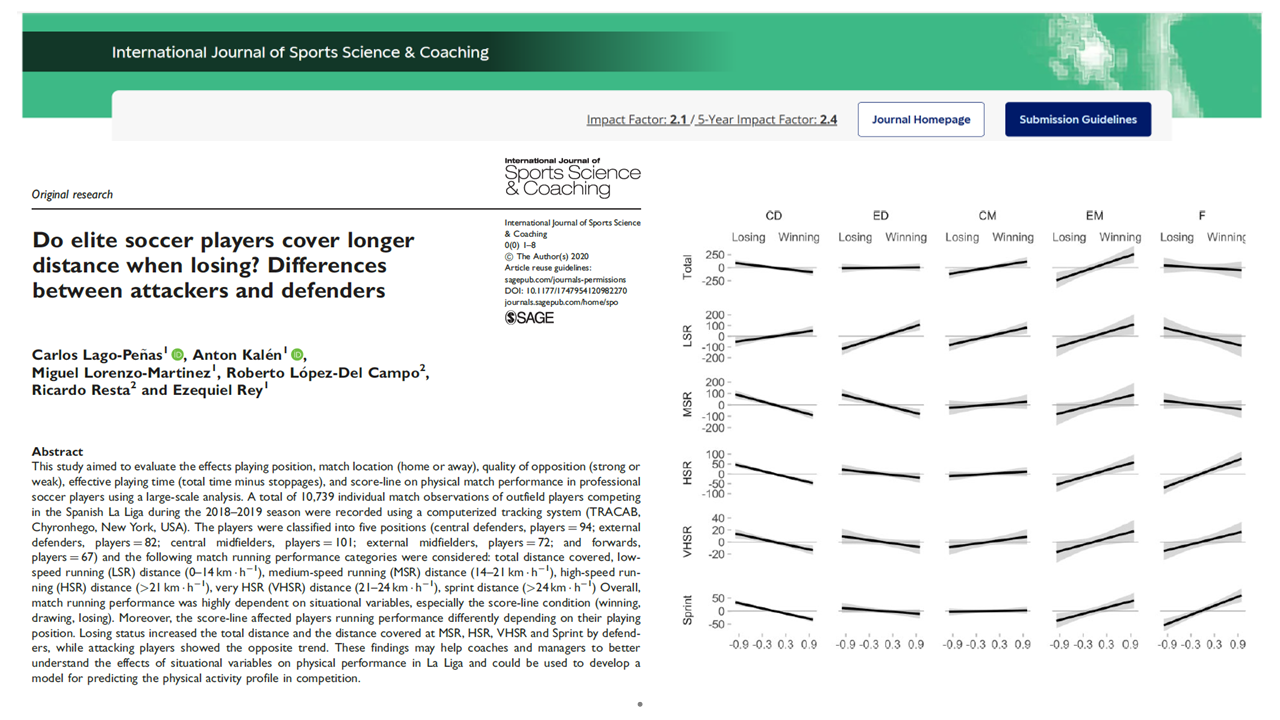
22 Dic Do elite soccer players cover longer distance when losing? Differences between attackers and defenders
Posted at 12:18h
in Paper
Practical Summary for Coaches and Analysts
We often hear that teams “run more when they are losing.” This study analyzed over 10,700 match observations in LaLiga to determine how the score-line (winning, drawing, losing) affects the physical performance of players — and whether the impact differs between defenders and attackers.
Key findings
- Defenders run more when losing. Central and external defenders increased their distance at medium, high, and sprint speeds when their team was behind on the scoreboard.
- Attackers run more when winning. Forwards and wide midfielders actually performed more high-speed and sprinting efforts when their team was ahead, looking to exploit spaces against opponents chasing the game.
- Midfielders are less influenced. Central midfielders covered similar distances regardless of whether their team was winning or losing, reflecting their constant role linking defense and attack.
- Home advantage confirmed. Players at home covered longer distances at high-speed and sprinting compared to when playing away.
- Effective playing time is key. Matches in LaLiga had an average of ~52 minutes of effective time, and running metrics were more precise when analyzing only time with the ball in play.
What this means in practice
- Conditioning must reflect match context. Training loads should not only be tailored to positions but also to situational demands. For example:
- Defenders may require conditioning for higher intensity defensive actions when the team is behind.
- Attackers should work on repeated sprint ability to capitalize on counterattacks when leading.
- Match analysis must go beyond totals. Simply comparing distances covered can be misleading — context (winning or losing) strongly influences effort profiles.
- Tactical implications. Coaches should recognize that pressing and recovery runs are more frequent for defenders when trailing, while attackers may conserve energy until their team is in an advantageous situation.
- Practical application. Integrating situational awareness (score-line, opponent quality, match location) into performance analysis provides a more realistic understanding of physical demands.
In short: players do not always run more just because the team is losing — it depends on their role.


